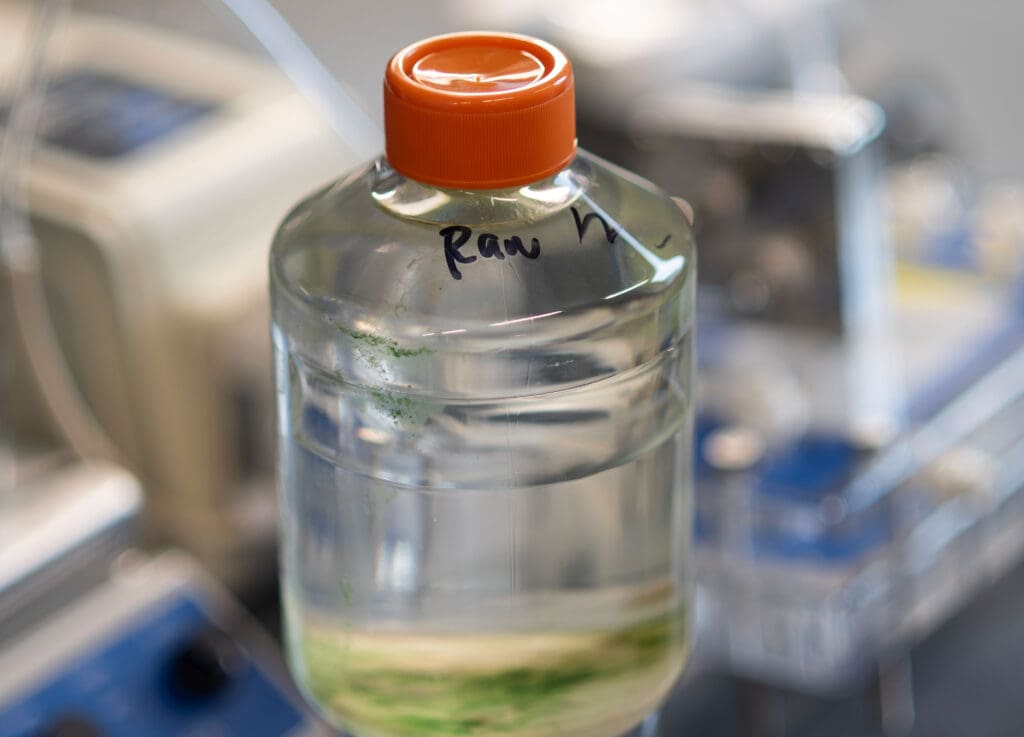Truro Pays for PFAS Filtration in Four Homes – The Provincetown Independent

Report on PFAS Contamination and Remediation Efforts in Truro, MA
Executive Summary
This report details the identification of Per- and Polyfluoroalkyl Substances (PFAS) in private water wells in Truro, Massachusetts, and the subsequent response by town officials. The town’s actions demonstrate a strong commitment to achieving several United Nations Sustainable Development Goals (SDGs), particularly SDG 3 (Good Health and Well-being), SDG 6 (Clean Water and Sanitation), and SDG 11 (Sustainable Cities and Communities). Since February, four residential properties have been confirmed to have PFAS contamination, prompting immediate and long-term remediation strategies aligned with ensuring public health and environmental safety.
Contamination Findings and Immediate Response
Identification of Contaminated Sites
Testing conducted by the Town of Truro identified PFAS contamination in the private well water of four residences. The affected properties are located near two key municipal sites:
- Near the Department of Public Works (DPW): 25 Town Hall Road, 30 Town Hall Road, and 25 Castle Road.
- Near the Transfer Station: 48 South Pamet Road.
Further testing revealed that eleven other homes near the DPW and seven homes near the transfer station tested negative for the substances.
Adherence to SDG 6: Clean Water and Sanitation
In direct support of SDG 6, which aims to ensure the availability and sustainable management of water and sanitation for all, the town initiated an immediate response to prevent ingestion of contaminated water.
- Provision of Safe Drinking Water: The town began delivering bottled water to all four affected households for drinking and cooking purposes. This action aligns with Target 6.1 of the SDGs, which strives for universal and equitable access to safe and affordable drinking water.
- Commitment to Responsible Practices (SDG 12): One resident noted appreciation for the town’s use of paper water containers, a choice that reflects a commitment to SDG 12 (Responsible Consumption and Production) by minimizing plastic waste.
- Proactive Regulatory Adherence: While Massachusetts sets a PFAS limit of 20 parts per trillion, Truro is operating under the Massachusetts Contingency Plan, which mandates providing alternative water sources if *any* level of PFAS is detected. This demonstrates a precautionary approach to public health.
Remediation Measures and Sustainable Infrastructure
Implementation of Point-of-Entry Treatment Systems
To restore safe tap water access, the town has been installing point-of-entry treatment (POET) systems at the affected homes. These systems are designed to filter PFAS from the water supply before it enters the house. As of the latest report, systems at two homes are fully tested and operational, discontinuing the need for bottled water delivery to those addresses. The remaining two systems are expected to be operational within weeks.
Investing in Sustainable Community Infrastructure (SDG 11)
Truro is undertaking significant long-term infrastructure projects to create a resilient and safe community, directly addressing the goals of SDG 11.
- Containment of Contamination: Voters approved a $3.2 million debt exclusion to fund the installation of a permeable reactive barrier around the DPW site. This barrier is a critical infrastructure investment designed to prevent the further spread of PFAS contamination through groundwater.
- Future Public Water Supply: The town is investigating the feasibility of installing a new public water supply well to serve the DPW, Town Hall, and nearby homes, representing a long-term strategy for water security.
Public Health, Governance, and Community Engagement
Protecting Good Health and Well-being (SDG 3)
The town’s response is fundamentally driven by the principles of SDG 3. PFAS, known as “forever chemicals,” are linked by the U.S. Environmental Protection Agency to severe health risks, including endocrine disruption, immune system damage, and increased cancer risk. By ensuring residents do not ingest contaminated water, Truro is actively working to protect community health and prevent disease.
Demonstrating Strong Institutions and Justice (SDG 16)
The town’s handling of the contamination crisis exemplifies SDG 16 (Peace, Justice and Strong Institutions) through its transparent, responsive, and regulated approach.
- Systematic Testing Protocol: Testing is guided by Department of Environmental Protection (DEP) regulations, which mandate sampling for properties within 500 feet and at a lower elevation of a known contamination site.
- Transparent Communication: Officials have kept residents informed, briefed the board of health, and provided information on the unknown source of the DPW contamination, which is potentially linked to historical waste disposal.
- Ongoing Diligence: The Health and Conservation Agent has affirmed the town’s commitment to continued neighborhood sampling to fully determine the extent of the contamination plume.
Analysis of SDGs, Targets, and Indicators in the Article
1. Which SDGs are addressed or connected to the issues highlighted in the article?
-
SDG 3: Good Health and Well-being
- The article directly addresses health concerns related to water contamination. It mentions that the U.S. Environmental Protection Agency warns that exposure to PFAS can harm the endocrine, immune, and reproductive systems and increase the risk of some cancers. The town’s actions, such as providing bottled water and installing purification systems, are aimed at protecting residents’ health from these harmful chemicals.
-
SDG 6: Clean Water and Sanitation
- This is the central theme of the article. The core issue is the contamination of private well water with PFAS chemicals, making it unsafe for drinking and cooking. The article details the town’s efforts to test water sources, provide safe alternatives, and implement long-term solutions to ensure access to clean water.
-
SDG 11: Sustainable Cities and Communities
- The issue is a localized environmental problem within the town of Truro. The article highlights the role of the local government (Truro’s Health and Conservation Dept., board of health) in managing the contamination, responding to citizen needs, and planning for sustainable infrastructure like a permeable reactive barrier and a potential public water supply well. This demonstrates local-level management of environmental hazards.
-
SDG 12: Responsible Consumption and Production
- The article identifies PFAS as harmful manmade “forever chemicals” used in various consumer and industrial products. The contamination is a direct result of the production and disposal of these substances. The article also touches on sustainable consumption choices when a resident expresses appreciation for receiving water in paper containers rather than “environmentally-unfriendly plastics.”
2. What specific targets under those SDGs can be identified based on the article’s content?
-
Target 3.9: By 2030, substantially reduce the number of deaths and illnesses from hazardous chemicals and air, water and soil pollution and contamination.
- The entire response by the town of Truro is an effort to prevent illness from the hazardous PFAS chemicals found in the water supply. The article explicitly states the town’s goal is to ensure “there to be any ingestion of it, even if it’s a super low level.”
-
Target 6.1: By 2030, achieve universal and equitable access to safe and affordable drinking water for all.
- The town’s actions of delivering bottled water and installing point-of-entry treatment systems for affected households are direct measures to restore access to safe drinking water for its residents.
-
Target 6.3: By 2030, improve water quality by reducing pollution, eliminating dumping and minimizing release of hazardous chemicals and materials.
- The article discusses the source of the pollution (potentially from catch basin sediments and street sweepings) and the town’s plan to install a $3.2-million permeable reactive barrier to “prevent PFAS from traveling further downstream,” which is a direct action to reduce pollution and improve water quality.
-
Target 6.b: Support and strengthen the participation of local communities in improving water and sanitation management.
- The article demonstrates this target in action. The town of Truro, a local administrative unit, is actively managing the water contamination issue. It involves informing residents, holding board of health meetings, and having voters at a town meeting approve funding for a solution, showing community participation.
-
Target 12.4: By 2020, achieve the environmentally sound management of chemicals and all wastes throughout their life cycle… and significantly reduce their release to air, water and soil in order to minimize their adverse impacts on human health and the environment.
- The presence of PFAS “forever chemicals” in the groundwater is a clear example of a failure in the sound management of chemicals. The town’s remedial actions, such as containment and purification, are responses to this failure and aim to minimize adverse health impacts.
3. Are there any indicators mentioned or implied in the article that can be used to measure progress towards the identified targets?
-
For Target 3.9 & 6.1:
- Number of households with contaminated water: The article states that four houses tested positive for PFAS.
- Proportion of population with access to safe water: The article mentions that four households are being provided with safe water (bottled water or new purification systems), while 18 other tested homes (11 near the DPW and 7 near the transfer station) already have safe water. This can be used to track the proportion of the affected population whose access to safe water is restored.
-
For Target 6.3:
- Concentration of pollutants in water: The article mentions the Massachusetts regulatory limit of 20 parts per trillion for six specific PFAS compounds. The results of water tests (positive/negative, and specific levels like the one below the limit at Anthony’s home) are direct indicators of water quality.
- Number of water tests conducted: The article states that tests were conducted at homes near the DPW and transfer station (at least 22 homes are mentioned). Continued testing is planned to “determine the true extent of any contamination.”
- Investment in pollution mitigation: The approval of a “$3.2-million debt exclusion” to install a permeable reactive barrier is a financial indicator of commitment to improving water quality.
-
For Target 6.b:
- Existence of local procedures for water management: The article describes Truro’s operational procedures, including testing protocols based on DEP guidelines (within 500 feet and at a lower elevation of a known site), communication with residents, and public meetings (board of health, town meeting) to address the issue.
4. Summary Table of SDGs, Targets, and Indicators
| SDGs | Targets | Indicators Identified in the Article |
|---|---|---|
| SDG 3: Good Health and Well-being | 3.9: Reduce illnesses from hazardous chemicals and water pollution. |
|
| SDG 6: Clean Water and Sanitation |
6.1: Achieve universal access to safe drinking water.
6.3: Improve water quality by reducing pollution. 6.b: Strengthen participation of local communities in water management. |
|
| SDG 11: Sustainable Cities and Communities | 11.6: Reduce the adverse per capita environmental impact of cities, including waste management. |
|
| SDG 12: Responsible Consumption and Production | 12.4: Achieve environmentally sound management of chemicals and wastes. |
|
Source: provincetownindependent.org

What is Your Reaction?
 Like
0
Like
0
 Dislike
0
Dislike
0
 Love
0
Love
0
 Funny
0
Funny
0
 Angry
0
Angry
0
 Sad
0
Sad
0
 Wow
0
Wow
0



























;Resize=805#)



















































